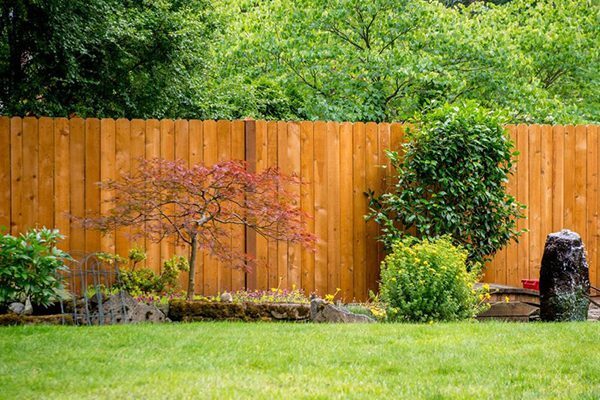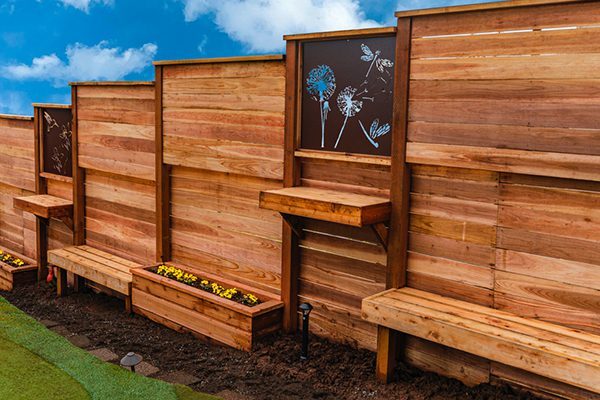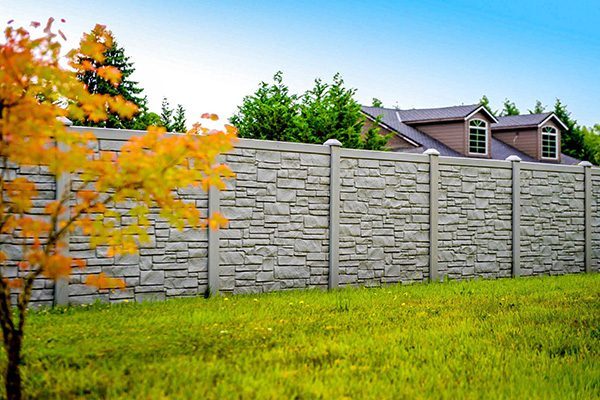Spring Fence Repairs in Oregon and Washington: 5 Signs It’s Time

Springtime in Oregon and Washington—from Portland and Beaverton to the Tri-Cities— brings milder weather, so it’s the perfect season to repair or replace your fence. Winter rain and fluctuating temperatures can take a toll on fences, so spring is the perfect time to fix damage before backyard barbecues and summer yard use kick into full gear.
With improved weather, materials set and cure more effectively. If you get started now, a sturdy, attractive fence will be ready when you need it most.
Read on for our five signs that your fence needs repair or replacement, such as rotting or warped boards, leaning fence posts, broken panels, corroded hardware, and pest damage, as well as how to find the right fence for your climate, and how to begin your fence repairs today.
1. Rotting or warped boards: Signs your wood fence needs repair
If your wood fence is starting to show its age, the first giveaway is usually rotting or warped boards. You might spot discoloration—like dark patches or a dull grayish tone—or notice the wood feels soft or spongy when pressed. Look out for cracking or flaking, as it can also be a sign of rot.
Warping can be hard to notice: sometimes, you’ll see boards bowing outward or looking crooked. In wet climates, like Salem or Hillsboro, the rain and fluctuating winter temperatures can speed up the decay process, which means minor problems can quickly turn into bigger ones.
If you see signs of rot in multiple boards or if large sections of your fence are warping, it’s time to get a professional opinion. An inspection can help determine whether you need a few repairs or a complete fence replacement. Tackling these issues early can often extend your fence’s lifespan, but if the damage is widespread, replacing the fence may be the best way to keep your yard looking great and secure.
2. Leaning fence posts: A common issue in the Pacific Northwest
Nothing undermines a fence’s integrity (and appearance) quite like a wobbly post. While it’s easy to ignore a slight lean at first, it often hints at deeper issues. Some common causes of unstable fences are:
- Soil movement: Rainy areas such as Gresham and Vancouver or places that experience frequent seasonal freeze-thaw cycles are likely to experience a lot of soil movement.
- Wind: Windy places like the Tri-Cities can experience additional strain on fence sections, gradually loosening posts that aren’t well-secured.
- Water runoff: Whether from your yard or neighboring property, water runoff can erode the ground around a post, making it progressively less stable.
If left unchecked, leaning posts can quickly escalate into more serious problems—like collapsing fence panels. Besides compromising security, a crooked fence can damage your home’s curb appeal. To catch subtle shifts early, watch for slightly off-plumb posts or notice if gate latches aren’t aligning correctly.
Promptly addressing these red flags with targeted repairs or a full post replacement is the best way to keep your fence sturdy, your property safe, and your yard looking great all year.
3. Broken or missing fence panels: When repair isn’t enough
Nothing says “urgent repair,” like a gaping hole or visibly cracked panel in your fence. Pacific Northwest winter weather can weaken boards over time, causing them to split, warp, or fall off entirely.
If panels have large splits, are missing entirely, or feel unstable when you gently push, it’s worth looking into bigger fixes. When you have multiple damaged or missing panels, patching them one by one may cost more time and money in the long run. Assess the overall condition of your fence—if significant sections are compromised, it might be time to replace your whole fence.
Broken panels don’t just look rough; they also open the door to security risks and reduce your privacy. A properly sealed and intact fence keeps out animals, deters trespassers, and keeps your backyard gathering out of view from curious neighbors. So, if you notice serious panel damage, don’t wait—decide whether a targeted repair or an upgrade to new materials is the smarter investment for your home.
4. Rusted or corroded hardware: When to replace a metal fence
Not all fences are made of wood—chain link, iron, and aluminum fences are popular for their durability and sleek appearance, but they come with their own problems. If you’re experiencing any of the following issues, it could be a sign of rust or corrosion:
- Squeaking or sticking hinges
- Discoloration spreading across posts and rails
- Small localized holes in the metal surface
- Layers flaking off
In regions like the Pacific Northwest with high humidity, coastal air, or frequent rain, corrosion can accelerate quickly.
The trouble with rust isn’t just cosmetic: it can weaken the structural integrity of your fence, making it wobbly or more prone to damage in heavy winds. To ward off these issues, consider applying a rust-proof coating or paint, especially if you live in a damp climate. Stainless steel components can also help extend your fence’s lifespan since they’re less likely to corrode than regular steel hardware.
If you’re spotting widespread rust or extensive damage—like large sections of a chain-link fence eaten away—repairs might not cut it, and a full replacement could be the better investment.
5. Pest damage: How insects can compromise your fence
When it comes to wood fences, pests like termites, carpenter ants, or wood-boring beetles can be a homeowner’s worst nightmare. At first, you might only spot subtle clues—like small holes in the boards, sawdust-like frass near the base, or minor surface damage. But, if left unchecked, these critters can cause severe structural issues that compromise your fence’s stability and lifespan.
In a damp or humid climate, like many regions across the Pacific Northwest, these insects can thrive and spread more quickly, making it especially important to stay vigilant.
If you notice widespread tunnels or hollowed-out sections of wood, you may be dealing with a significant infestation that calls for professional help. Pest control specialists can confirm the presence of pests and recommend treatments that may save parts of your fence if the damage isn’t too advanced. Severe or recurring pest activity might mean it’s time to replace your fence with materials less prone to insect attacks, like simulated fencing or vinyl.
Choosing the right fencing solution for your local climate
Even the best fence materials won’t last if they’re not suited for where you live. Some fencing options to consider in the Pacific Northwest, where rain, wind, and occasional snow can all be factors, are:
- Cedar: Naturally resistant to rot and insects, cedar is ideal for the Pacific Northwest’s damp conditions. You can seal or stain it to enhance durability and maintain its warm, inviting look.
- Vinyl: Requires minimal upkeep and resists warping, rot, and mold—even in high humidity.
- Aluminum: Lightweight, strong, and corrosion-resistant—ideal for windy or coastal areas.
- Simulated materials: Options like Allegheny Simulated Rock or Sherwood Simulated Wood offer impressive durability with stylish looks.
Contact Rick’s Custom Fencing and Decking for a free estimate
Spotting warning signs can be a game-changer when maintaining a sturdy, good-looking fence. By tackling these issues in the spring, you’ll benefit from milder weather that allows materials to cure properly and contractors to work more efficiently. Plus, you’ll get ahead of the busier summer months, so you can spend less time worrying about repairs and more time enjoying your yard.
Don’t let small issues turn into costly repairs. Whether you need minor repairs or a significant replacement, Rick’s Custom Fencing and Decking is here to help. Reach out for a free estimate or call one of our five locations to start improving your fence and outdoor space today.



